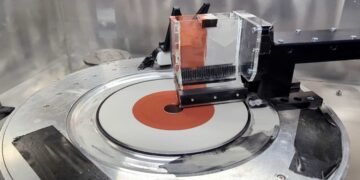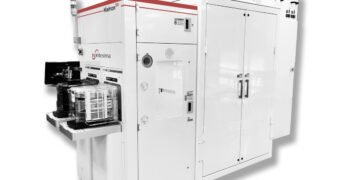If you have ever gotten up on a winter morning and thrown yourself into the arduous task of scraping frost from a windshield, a Virginia Tech lab is engaging science [IS1] that could make your life much easier. In research funded by the National Science Foundation, Associate Professor Jonathan Borekyo has led a team in developing a potential solution for frost removal by way of electrostatics.
As water freezes, positively charged protons and negatively charged electrons separate. Frozen ice crystals become electrified as the top of the frost becomes warmer than the bottom of the frost. This causes charged ions to move from top to bottom (warm to cold), but it turns out that the positive ions can migrate faster. The top of the frost ends up being negatively charged while the bottom is more positively charged, a concept known as charge separation.
Charge separation in frost has been studied in the past, but the effect has never been exploited to remove the frost from its surface. Boreyko’s Nature-Inspired Fluids and Interfaces Lab set out to fill that gap. The team started by artificially creating frost on a surface. They then suspended a film of water above the frost using filter paper. Opposites attract, so the negatively-charged top of the frost sheet attracted the positive ions in the water. This generated an electric field that exerted an attractive force on the frost sheet.
Using a high-speed camera, the team observed frost particles breaking off their substrate and jumping toward the opposing film of water. Frost was grown on both metal and glass surfaces, indicating that the jumping frost effect is possible regardless of the thermal and electrical properties of the object holding the water.
With this data in hand, the team is moving to larger scales in their testing. The ice particles in this experiment were very small in size, each only a few millimeters or less. Boreyko’s team is working toward removing large sheets of ice by increasing the amount of charge that comes near the frost. By replacing warm water with actively charged electrodes, the small frost jumps could become large-scale ice evacuations.
“If we can amplify this electrostatic de-icing effect, such that entire sheets of ice or frost are instantly ripped away from their surface, it could be a game-changer for the aircraft and HVAC industries,” said Borekyo.
These findings were published in ACS Nano. The article’s lead author was Ranit Mukherjee, a graduate student in Boreyko’s lab.




































